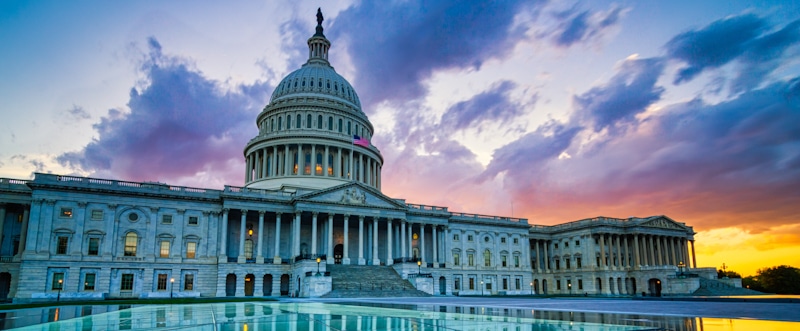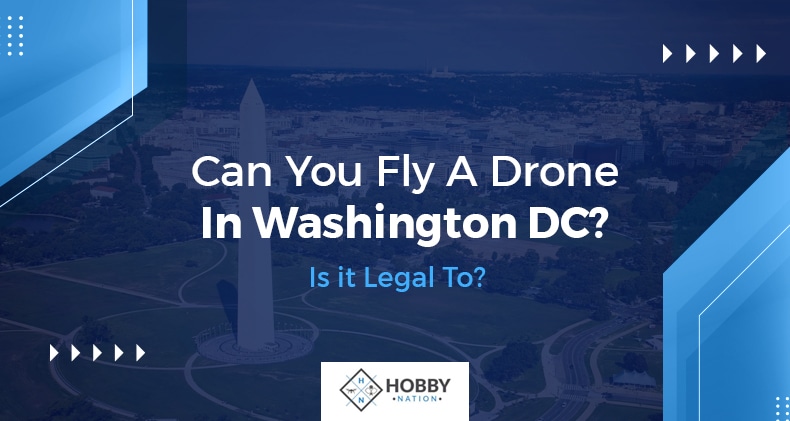Flying a drone can be a lot of fun but you still need to know what the rules and regulations are regarding drone flight in the area you'll be in. Since Washington DC is the capital of the United States you'd expect them to have a special set of rules and regulations you'll need to follow while flying your drone here. You may even find yourself wondering if it's legal to fly a drone here.
Washington DC has been designated a no-fly zone by the Federal Aircraft Administration (FAA). This means that it's illegal for you to fly your drone within a 15-mile radius of the nation's capital. If you get caught flying your drone here you're subject to civil and criminal charges.
Flying Your Drone in Washington D.C.
Within a 30-mile radius of the Ronald Reagan Washington National Airport is governed by a Special Flight Rules Area (SFRA). This restricts all flights in the greater D.C. area. Therefore, if you don't have specific authorization from the FAA you aren't allowed to fly your drone within the 15-mile radius of the inner ring of this area.
There are some circumstances in which you'll be allowed to fly a drone between 15 – 30 miles from Washington D.C. These conditions include:
- Your drone must weigh under 55 lbs. This includes any attachments (e.g. camera) you may also be using.
- If your drone isn't operated exclusively under the Special Rule for Model Aircraft, it must be registered and marked.
- You must fly your feet at under 400 feet.
- You must keep your drone within your visual line-of-sight while flying it.
- The weather conditions must be clear in order for you to fly.
- You should never fly your drone around any other aircraft.
Why You’re Not Allowed to Fly Your Drone in Washington D.C.
It's true that the airspace surrounding Washington D.C. is more restricted than the airspace in any other part of the country. This is because after 9/11 there were rules put into place that established a "national defense airspace" around this area and banning almost all aviation here. According to this rule (the Flight Restricted Zone a.k.a. FRZ), aircraft operations are limited only to those that are authorized by either the FAA or the Transportation Security Administration. This area extends in about a 10-nautical mile area that's centered around the Reagan National Airport which is located in Virginia. Anyone who's caught violating this rule finds themselves being faced with stiff fines and criminal penalties including imprisonment of up to a year under 49 U.S. Code § 46307.
What Would Happen if You Flew Your Drone in Washington D.C.
The FRZ actually falls within a larger security zone which is known as the Special Flight Rules Area (SFRA). In this area, aircraft are subjected to even more security measures but it is possible for you to fly your drone here. You do need to be careful though since the FRZ and SFRA are permitted to shoot down any aircraft they deem an imminent threat. Typically they won't do this. Instead, they'll usually use an airplane or helicopter to intercept the drone and escort it to a nearby airport. Once there the pilot is fined.
Why it’s Important to Understand These Rules
One of the main reasons why these rules are so important for drone pilots to understand is that there are people on the ground who must be taken into consideration. A drone can easily weigh more than 10 pounds. When this much weight is dropped from a height of only a few stories, it can do some serious damage. This is why these rules are taken so seriously.
It isn't only around Washington D.C. that drone flight is being closely monitored. For instance, one drone operator tried to fly their drone through midtown Manhattan and almost collided with a pedestrian. When this happened the FAA fined them $2,200. Another area in which it's being closely monitored is in national parks like Yosemite in California and Zion in Utah. Both of these parks have announced that pilots caught flying drones would be fined $5,000, be jailed for 6 months, or both. This is because drones are seen as dangerous and disruptive.
Flying Your Drone Over CIA or NASA
While you may be tempted to fly your drone over the CIA or NASA, you shouldn't do it. The CIA's headquarters in Langley, Virginia, and NASA's headquarters in Fort Meade, Maryland both fall within the FRZ. This means that these areas are tightly-controlled Class B airspace.
Authorized Drone Flight Around Washington D.C.
Although Washington D.C. is categorized as a no-fly zone this doesn't mean that drone pilots can't get aerial photography here. It simply means that you have some very strict rules that you must follow in order to do so. The FAA will consider drone flight in the DC-FRZ area on a case-by-case basis. There are a few important details that they want you to address before launching your drone in this zone.
Before you decide to apply for a permit to fly your drone in this area it's important for you to understand that there are actually two distinct zones here. They include:
- 7 – 15 nautical miles away from Washington D.C. is considered the "inner ring"
- 0 – 7 nautical miles away from Washington D.C. (an area that receives more scrutiny and has harsher requirements)
Regardless of where you're located within this area, you'll need to follow some very specific rules.
Drones can only be used to conduct legitimate business.
Anyone who's flying their drone for recreational purposes won't be approved to do so in this area. As a business owner, you'll need a letter either on your company's letterhead or from your client indicating that you've been hired, stating why you've been hired, and also stating why the mission can't be carried out with either manned aircraft or by using ground-based photography equipment. It's a good idea to also briefly restate the pilot's qualifications and experience in this letter when you write it.
You'll be required to provide a lot of information regarding your drone's flight crew and its mission.
When the officials review your application for approval one of the top concerns in their minds is that regarding security. This is why they'll require you to list all of your flight crew's personnel (e.g. pilots, visual observers, onsite assistants) and their place and date of birth, Social Security number, passport number, and pilot certificate number if they have one. Since FRZ authorizations are drone specific you'll also need to submit the registration number along with a colored photo of each of the drones you'll be flying. If you'll be using more than one drone you should state how many you'll be flying at one time and what you'll be doing to mitigate any problems so that you can maintain safety at all times.
You must show the FRZ that you're dedicated to safety and have taken the time to carefully plan out your mission.
It'll take a great deal of planning and forethought regarding the launch and recovery points, contingency plans, flight routes, and altitudes if you want to fly a DC-FRZ approved mission. You'll need to include this information along with maps clearly delineating your flight area and the coordinates for launching and recovering your drone. It's also important to state your "lost link" or flyaway procedures so they'll know what you'll do if you're approached by other aircraft that isn't participating in your mission.
There are specific activation and communication procedures necessary for you to be able to fly a drone in and around Washington D.C.
Once you've been authorized to fly your drone in this area you must send the TSA a "heads up" email 24 hours prior to your proposed flight. On the day of your flight, you must also notify the TSA and its tower one hour prior to commencing your flight and again when you're done flying. The TSA will also require you to call them every two hours so you can continue flying.
There are additional special requirements for anyone who wants to fly their drone especially close (0-7 nautical miles) to the national capital.

To fly your drone within the "inner ring" of Washington D.C. you must be flying for government purposes or be supported by the government in some way. This is something you'll be asked to document when you apply for permission to fly your drone here. Additionally, you must hire a law enforcement officer from the jurisdiction in which you'll be flying your drone. It's their responsibility to check that your drone is properly registered and that you're licensed to fly a drone. They must also communicate with TSA and the Secret Service before they can take flight. You'll also be asked for additional proof of insurance to the LEO coordinator. This will include worker's compensation coverage.
Conclusion
Since the FAA considers Washington D.C. a no-fly zone it's illegal for you to fly your drone within 15 miles of the nation's capital. If you get caught flying your drone in this area you'll be subjected to both civil and criminal charges.
Shawn Manaher loves to play with new toys and dive into new hobbies. As a serial entrepreneur, work definitely comes first but there is always room for hobbies.



